Naktya Ravlyachi Vihir (Well) is a unique stepwell with Bhamani styled architecture located in Karad city, Maharashtra. This structure has beauty as well as usability. It was a part of Pantacha Kot Fort of Karad which is no longer in existence. If you are travelling to Karad or going nearby, this place is a quick getaway. And you must visit it if you like ancient architecture and history. This stepwell and Pantacha Kot fort were at the centre of all military and political movements of Karad.
After seeing the Baramotichi Vihir in Satara , I fell in love with step-wells and wanted to see more. Naktya Ravlyachi Vihir stood out to me because it is so geometric and beautiful. And it is also closer to my home city – Pune.
This is day 6 out of my 21 day Maharashtra tour.
Quick details of Naktya Ravlyachi Vihir (Well)
- Where: Karad city
- Accessibility and safety: Not accessible to wheelchairs, and unsafe for kids.
- Timings: The nearby locals told me the gate is always locked. So we have to jump the gates.
- Food: There are several food stalls near the Pritisangam garden located 5 min walk from here.
Check out our Ebook on – 108 Shiva Temples in Pune
How to reach Naktya Ravlyachi Vihir
You should take your own bike or car to reach here. But there is no parking area close to the stepwell. You may have to park your vehicle a bit farther from the well. If you want to come by public transport, come to Karad bus stop, and then take an auto-rickshaw from there.
- Pune to Naktya Ravlyachi Vihir distance: 164 km or 3 hours.
- Mumbai to Naktya Ravlyachi Vihir distance: 307 km or 5 hours
- Satara to Naktya Ravlyachi Vihir distance: 52 km or 1 hour.
- Kolhapur to Naktya Ravlyachi Vihir distance: 74 km or 1.5 hours.
The gates were locked!
I took a quick stop in Karad, just to see this Naktya Ravlyachi Vihir. And to my dismay when I reached here its gates were locked. I am not a person who would give up that easily. I started asking about it to people who live nearby. And one grandpa who lives right next to the stepwell gate told me that it is always locked. And the only way to go inside would be to jump the gates.
He turned out to be a historian. And he told me a lot of information about this well and about Karad fort, which I would otherwise never know. Thanks to the locked gates, I got to know him. And later I jumped over the fence because the gates were too high. And I saw this stepwell from the inside.
Naktya Ravlyachi Vihir
Naktya Ravlyachi Vihir is located at the western end of the old Pantacha Kot fort inside Karad city. It is just 100 feet away from the Koyna river basin. The architecture is very geometric in shape. It is 136 feet long. Out of this 36 feet is the water part towards the north of the stepwell. This part of the well is square-shaped. But towards the northeast, there is a circular landing. This is possibly the place from where they used to lift the water from this well.
The rest of the 100 feet of this stepwell is full of stairs and a pathway that leads down to the water. These are a total of 83 grand stairs that lead down below. And after every 20 steps, there is a landing that is 3 times larger than the other stairs.
At the end of this staircase are two huge stone pillars that meet in the most beautiful arch. There are two smaller arches around this large one. You can walk alongside the walls of this well and go right inside this giant central arch. That is the best place for taking pictures.
The Architecture
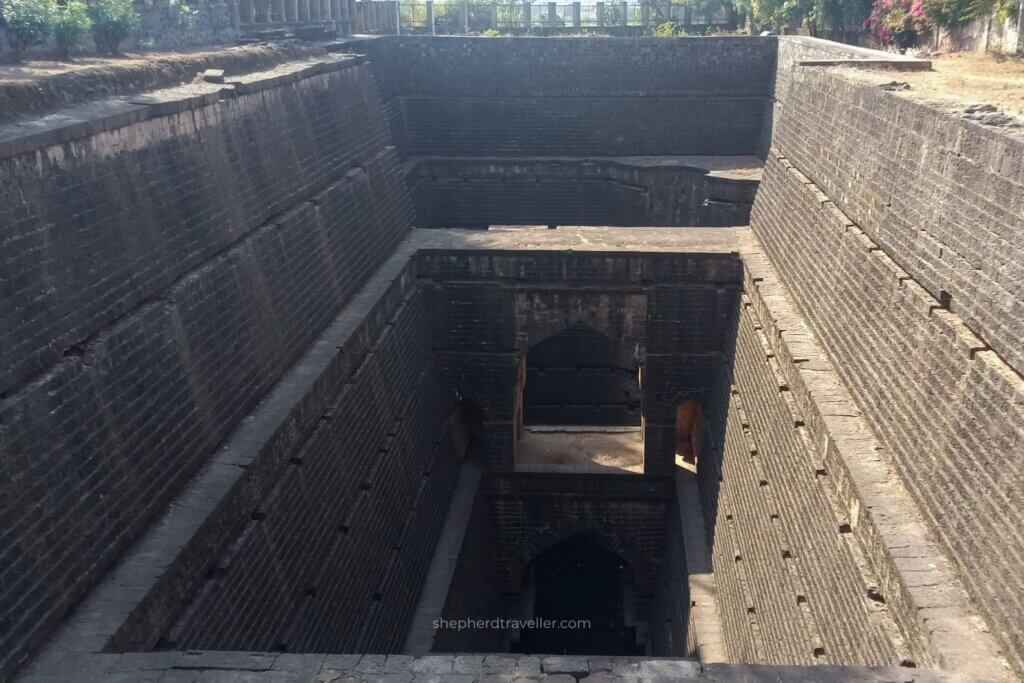
This structure represents the architecture of the Bhamani period. The beautiful arches inside the well reminded me of Mughal architecture. The walls on both sides of this stepwell are tapering as they go deep inside the stepwell. This means the walls on the top are wider than the walls deep below. As the well was dug out in loose soil, it has been supported and built by huge hard rocks, which are held together by lime.
The side walls inside the entire stepwell have grooves or niches at every 13 to 15 feet. These grooves supported huge wooden planks that form a wooden shelf. Some broken wooden pieces can still be found stuck between these grooves or niches. A three-storey building was constructed inside the stepwell with the help of these grooves and wooden planks. In event of a siege, they would hide food and ammunitions inside this stepwell and cover it up with wooden planks. How genius is that! This is the most unique feature to be found inside a stepwell.
Who built Naktya Ravlyachi Vihir?
There is a lot of mystery and several different opinions as to who built the Naktya Ravlyachi Vihir. According to a myth, this stepwell was constructed in one night by a devil called Naktya Ravlya. And that’s where it gets its name. At the first glance, the stepwell appears to be a piece of Mughal architecture. Some historians believe it to be a piece of Bhamani architecture. This is supported by the fact that there are no carvings or idols of Hindu gods and goddesses inside the stepwell.
But the most notable fact here is that the Mughals have not constructed a single fort in Maharashtra. And during excavation here, several artefacts belonging to a period prior to the Mughal era were found near the stepwell in Pantacha Kot fort. This is why G. N. Dandekar – a famous writer and historian who loves studying forts tells us that this construction might be from the pre-Mughal era. According to him, it must have been constructed by the Vakatak – Shilhars. As they have done several notable pre-Mughal constructions across Maharashtra.
Pantacha Kot Fort
Pantacha Kot fort was constructed on flat land which is why it is a Bhuikot. Even though it is not a hill fort, it is located a few meters higher than the normal ground. The actual fort no longer exists but the ancient fortification can be seen near the confluence of Krishna and Koyna river.
You can also find one or two turrets (Buruj) in the city which were a part of this fort. But most of its turrets have been collapsing one after another. One such turret can be found inside the Vivekananda Shaishanik Sankul. This one has been restored and it is in very good condition. Another turret can be found behind the Palkar school now. This turret or buruj has collapsed from the inside, but it looks very beautiful from the outside. The intricate designs from centuries ago can be seen on this turret.
Krishna Koyna Pritisangam
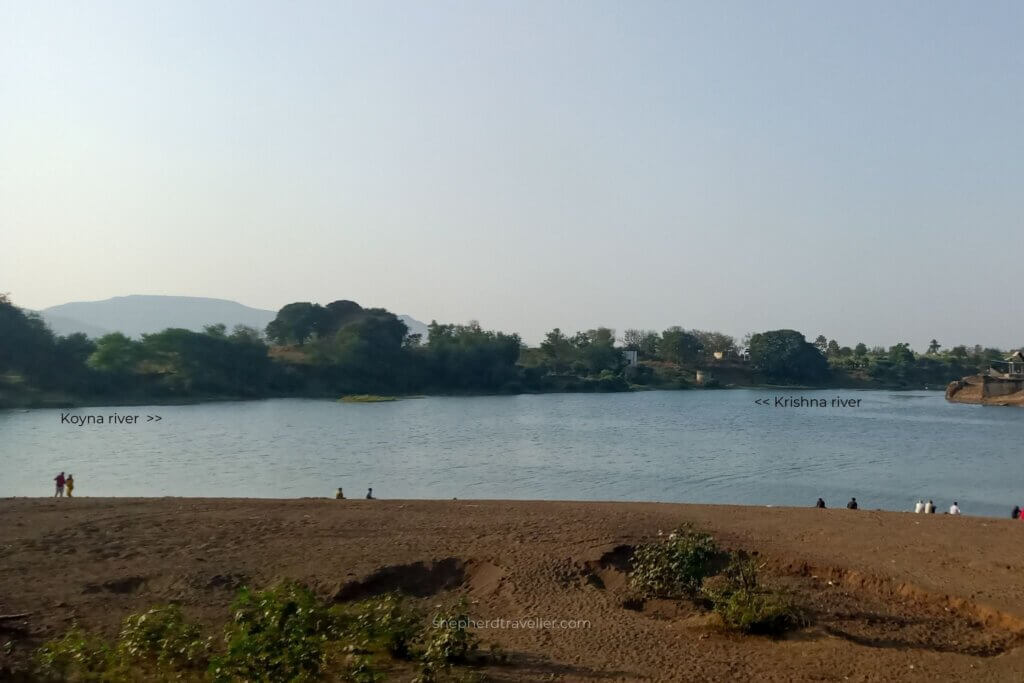
If you have come to Karad to see the Naktya Ravlyachi Vihir (Well), you should also visit the Pritisangam garden. Krishna Koyna Prtisangam is the most beautiful natural wonder on the banks of which Karad city is situated. This is a confluence of the two rivers- Krishna and Koyna. And it is surrounded by a pretty garden. Pritisangam garden is just a 5 minute walk from the Naktya Ravlyachi Vihir.
Both these rivers Krishna and Koyna originate in the hills of Mahabaleshwar. The Koyna river heads straight south and then heads east. It goes through the Koyna wildlife sanctuary forest and the Koyna dam in Koynanagar before coming here to Karad. And the Krishna river goes eastwards first and then goes south. It goes through Wai, Umbraj, Mahuli, Khodashi before reaching Karad. Both the rivers meet face to face here at this confluence called Pritisangam. After this confluence, the river going ahead is called the Krishna river.
Interestingly, I was camping near Krishna river in Wai a few days back. And I was in Koynanagar for the last two days. And just this morning I had tried fishing in the Koyna river in Koynanagar!
Krishna Ghat
There are several temples dedicated to different gods and goddesses here. The ghat is beautiful with carved stone steps leading down to the river. This is also the place where all the mouth-watering food stalls are located. It is very close to Pritisangam.
Other Places to visit near Karad
- Sadashivgad Fort
- Vasantgad Fort
- Khodashi dam
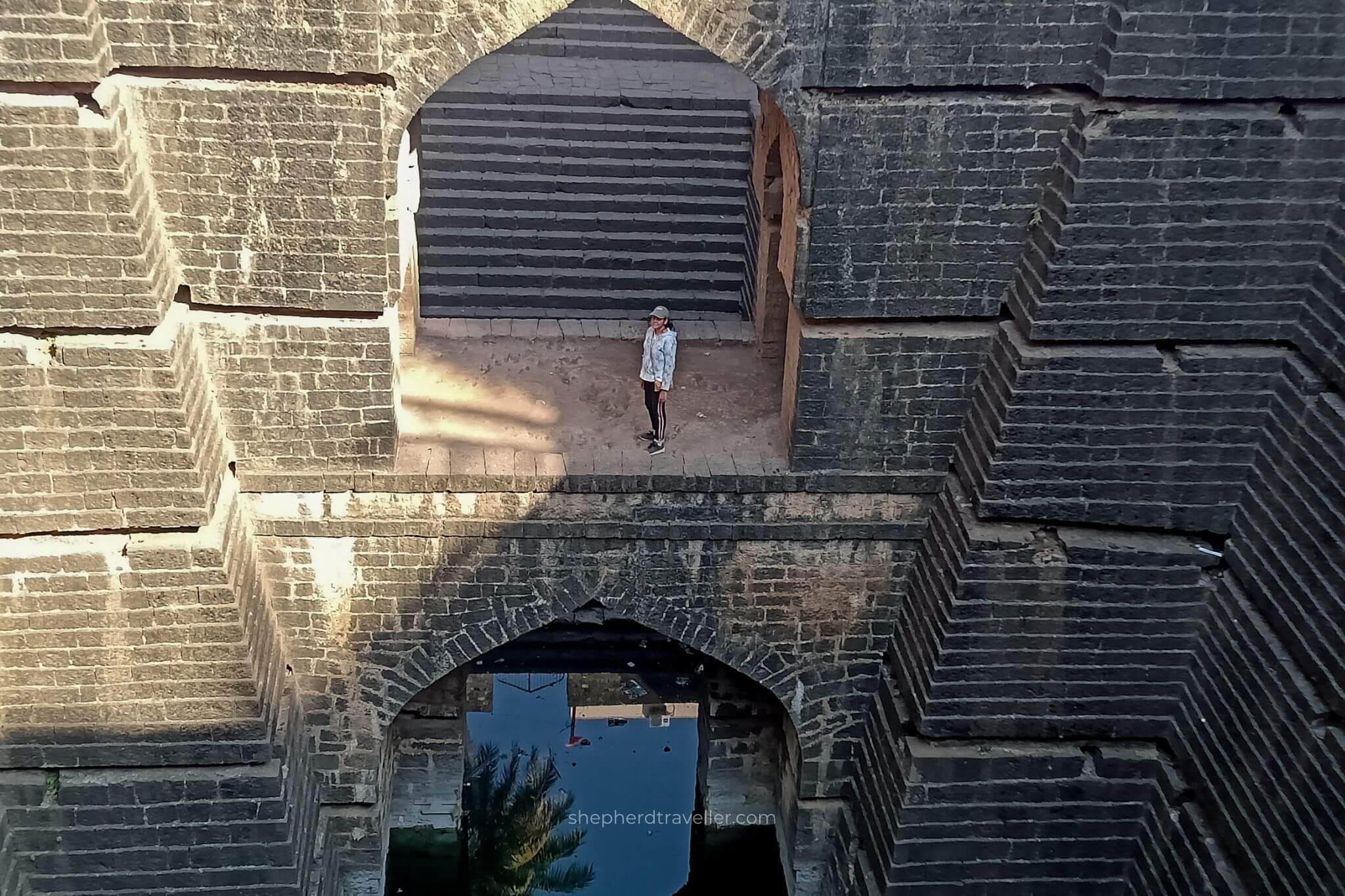
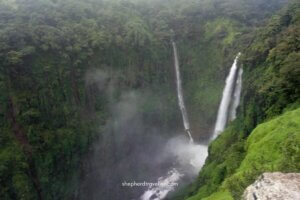
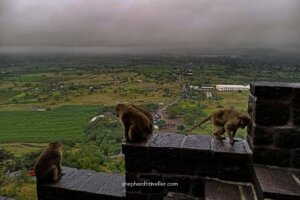
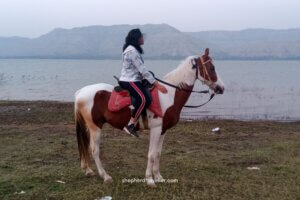
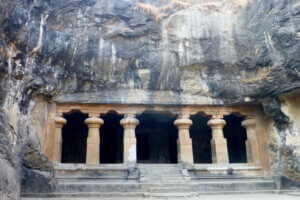
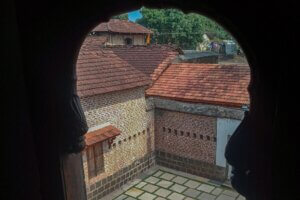
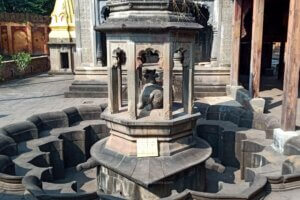
Stumbled upon this blog.
Loved the narration.
Keep exploring!
Hey shephertraveller!
Loved this peice ❣
Keep roaming
Thank you dear 🙂
i am from karad 😊 loved your blog i am also creating the blog for karad city
Thank you for writing about the “Nakatya Ravalya Vihir/Well” . This is a very historic monument, however the entrance of East is not the true entrance and it is very narrow and unsafe especially when school children visit this well. There is another entrance for this well that is from the North. However, the current administrator of the next plot which is occupied by Bapuji Salunkhe college has unofficially closed that entrance by putting a gate. Karad Municipality has given a separate road to this well. ASI Officials should look into it and open this gate so that everyone visiting this monument can have a safe entrance for this monument. Let us preserve our heritage.